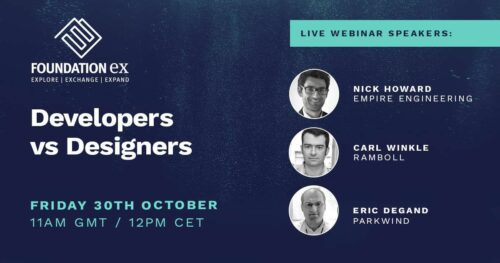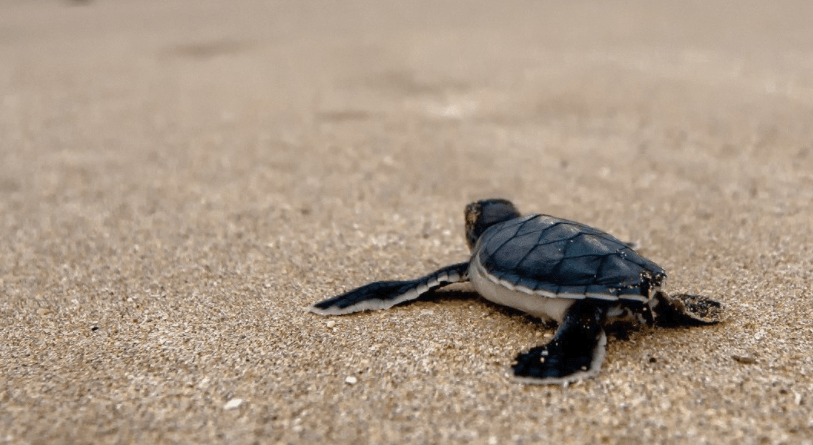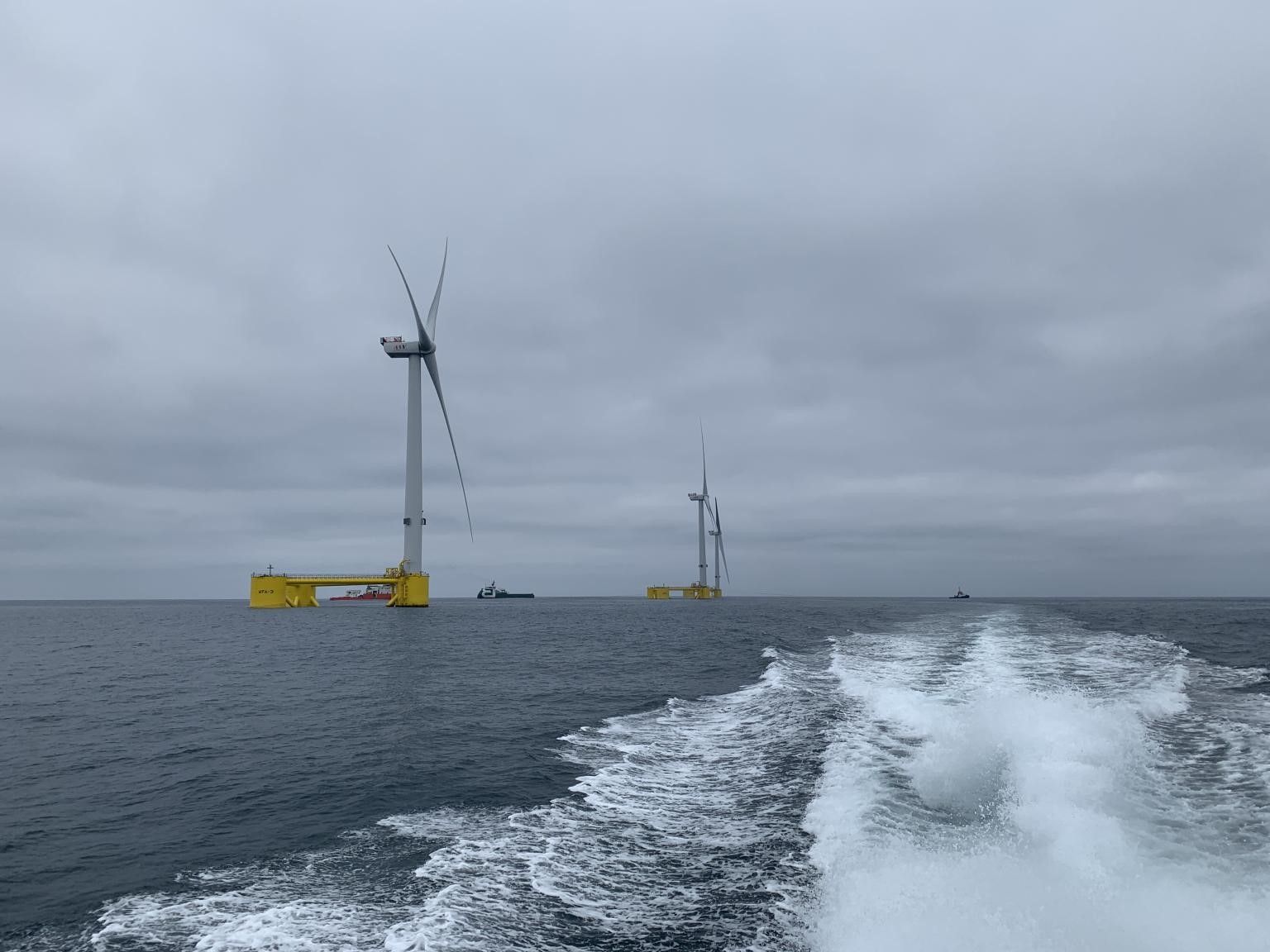As one of the fastest growing renewable power sources, offshore wind industry embraces cutting-edge technologies, such as Big Data, Internet of Things, artificial intelligence, machine learning and blockchain, to improve the efficiency of power generation, increase turbine reliability, and reduce operation and maintenance cost in offshore wind farm projects. Therefore, continuous innovation is essential for this young energy sector. Diversity in offshore wind can increase the probability of a breakthrough and locate more potential innovations. Many evidences indicate that teams can leverage diversity to be more innovative and productive.
Even though offshore wind, as a green, clean, carbon-free energy sources, attracts a lot of environmental enthusiastic talents from top universities, diversity does not happen easily in most engineering firms in the offshore wind sector. Good diversity is best achieved through a strategic approach that focuses on specific goals.
Understanding diversity in offshore wind and how it benefits the workplace
Discipline Diversity
Developing an offshore wind farm involves many stakeholders and a complicated network of supply chain. The successful delivery of an offshore wind farm project requires cooperation of professionals from multiple engineering disciplines:
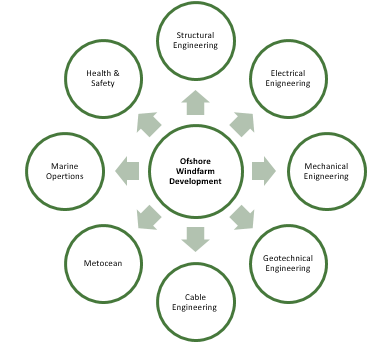
Having a multi disciplinary team can have significant benefits:
- Boosting efficiency: A multidisciplinary team allows streamlined communication and decision-making between different discipline engineers, preventing the traditional complicated cross-department approval processes.
- Saving cost and time: Integrated engineering solutions can be developed by a discipline diverse team across the whole life of an offshore wind farm development project from design to construction, operation and decommissioning. The integrated solutions can identify potential conflicts between different disciplines in early stage, avoiding unnecessary re-work and modifications, and hence help cut costs and meet deadlines.
- Enhancing innovation: A discipline diverse team can create synergy between engineers with various engineering background, which facilitates developing innovative solutions to overcome both technical and commercial challenges.
- Improving people development: Different discipline engineers closely working together encourages knowledge and experience sharing within the team and provides employees with wider opportunities for career development.
Cultural Diversity
London is one of the most multicultural cities in the world, attracting global talents from everywhere. Offshore wind is a global business and most of offshore wind developers have a multicultural workplace in London. Hofstedes’ dimensions of culture differences help people effectively manage multi-culture team and better understand international business. Culture values that distinguish countries from each other could be grouped statistically into six clusters.
Take Empire as an example, its UK team have various cultural backgrounds, including the United Kingdom (UK), New Zealand, China, and France, see Figure 2‑2 below. Those countries have substantial cultural differences. For instance, in the area of Uncertainty Avoidance, with a high score of 86, French people like structural and planning but not surprises. The French are good at developing complex technologies in a stable environment. Conversely, China and the UK have low scores of 30 and 35, respectively, which indicate that both countries are comfortable with ambiguity, are adaptable and entrepreneurial. This can be exemplified by the fact that majority of British and Chinese businesses are Small and Medium-sized enterprises (SMEs).
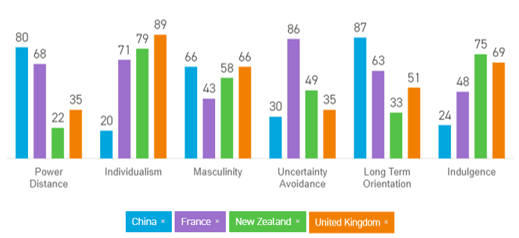
By understanding the different cultural dimensions, the advantages of having cultural diversity for an engineering consulting team are obvious:
- Increasing creativity – A multicultural team contributes to creativity and a fresh approach on projects. According to research by Harvard Business School professor Roy Y.J. Chua, “The more your network includes individuals from different cultural backgrounds, the more you will be creatively stimulated by different ideas and perspectives. Importantly, these ideas do not necessarily come from the network members who are culturally different from you.”
Providing customers with better services – A diverse culture working environment allows staff to become more sensitive to different cultures, which improve their ability to work with customers from various cultures. Hence, a multicultural workplace can improve the efficiency of communicating and connecting with customers.
Gender Diversity
Plenty of evidences show that gender diversity makes organisations more innovative, productive, and profitable. A research of over 4000 companies in Spain indicates that gender diversity is positively related to radical innovation, i.e. gender diversity generates certain dynamics that foster novel solutions leading to radical innovation (Díaz-García, 2013). In addition, a McKinsey’s study on 366 public companies found that the top 25% companies having high level of gender diversity in management were 15% more likely to have financial returns above their industry mean (Hunt, 2015).
However, Raconteur’s Future of Engineering report states that Women only make up 12 percent of engineering professionals in the UK (Magda, 2018). An engineering firm who does better in gender diversity is more attractive for female talents. Because top female candidates care about gender diverse work environments. This may drive gender diverse companies to outperform their competitors.
Cognitive Diversity
Problem solving is a central task for engineering consultancies. In the recruitment process, candidates’ gender, culture and academic background, and professional experience are shown on their CVs. However, perspectives and heuristics, which are essential for problem solving, could not be easily seen on the CVs.
Engineers with different perspectives and heuristics see problems differently and identify solutions differently. Having diversity in offshore wind teams can increase the probability of a breakthrough and locate more potential innovations. When a group of engineers work together to solve a problem, one engineer makes an improvement, the others can often further improve this new solution. The combination of each individual’s improvements can be more powerful than the sum of the parts, i.e. 1+1=3, the same logic shows that 1+1+1=7, which is called superadditivity by Scott E. Page (Page, 2007). Superadditivity can be released when a group of people bring diverse perspectives and solutions together to a problem. Ability is a property of an individual, and diversity is a property of a team. Diversity and ability are complementary each other. The better the individual performs, the more the team succeeds.
Similar to the evolution that genetic mutation maintains diversity, the same effect occurs is an organisation. Diversity can lead to a better individual performer and better collective performance of teams. Increasing diversity improves collective performance at problem solving.
Therefore, to better understand the cognitive abilities, interviews with relevant psychometric tests and request for recommendation will be helpful. Some well-designed psychometric tests, such as Belbin Teams Roles, are used to identify behavioural strengths and weaknesses in the workplace. It can help team leaders to (Belbin, 2020):
- Establish a balanced team based on behavioural contributions rather than job titles;
- Better understand individuals who can adapt their behaviours according to the situation and business need;
- Assign right people to do the right tasks, leading to better-performing teams;
- Have depersonalised team conversations, using a common language to discuss team contributions;
- Have informed and impartial decision-making, based on fact rather than a ‘gut-feel’ which may be subject to unconscious bias;
- Get insight into behavioural strengths and weaknesses which aren’t necessarily revealed by a CV;
Facilitate coaching conversations and people development.
Generate a high performing diverse team
Scott E. Page’s “Diversity Trumps Ability Theorem” implies that a team of people with diverse skills working together can outperform people with high individual abilities. A recent research suggested that diverse teams outperform homogenous teams because they process information more carefully (Rock, 2016).
Ability is still important, but so is diversity. Once an ability threshold has been met, diversity matters more than ability. Ideally, an organization would have an abundance of both (Page, 2007). Therefore, in the team building of an offshore wind project, diversity would be considered as much as ability. Managers should look for people with diverse training, experience, and identities. Diversity in offshore wind is key to success.
Diversity does not simply happen in many organisations. To set up a diverse project team, a strategic approach that focuses on specific goals will be required. Leadership and change management are crucial in the process of establishing a diverse consulting team. The flowing steps are recommended:
- Appoint a suitable team leader / project manager who has various dimensions of diversity, embraces and understand diversity, and is capable to lead a diverse team;
- Understand the current situation of the organisation, identify diversity gaps, and define clear goals of the establishing a diverse team;
- Create a strategic plan for initiatives, for example, increasing gender diversity or cognitive diversity;
- Execute the initiatives address potential barriers, such as cultural differences;
Closely monitor team’s performance at the beginning of the project and adjust the team as necessary.
Empire Engineering are offshore wind foundations specialists. To find out more please get in touch.
#OffshoreWind #OffshoreWindFoundations #EmpireEngineering #EngineeringTeams
Talk with a specialist
We've been a part of some of the worlds most exciting and
complicated projects in offshore wind.
If you need more eyes, brains and hands, we're ready to help.


